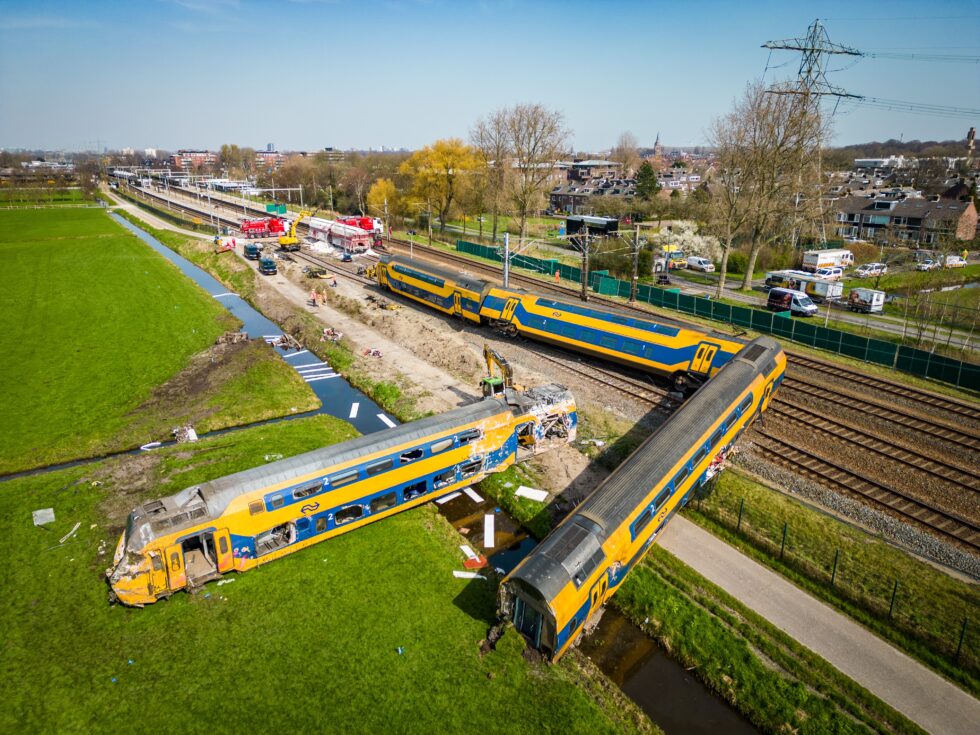
Collisions and derailment Voorschoten
Op dinsdag 4 april 2023 om circa 3.25 uur reed een goederentrein een kraan op lorries (KROL) aan. Deze kraan, die zowel op de weg als op het spoor kan rijden, werd gebruikt bij werkzaamheden aan het spoor. Ten tijde van de aanrijding bevond de kraan zich op of nabij het spoor waar de goederentrein reed. Door de aanrijding met de goederentrein kwam de kraan in het nevenspoor terecht, waar die korte tijd later werd aangereden door een reizigerstrein. De reizigerstrein ontspoorde en kwam deels in een naastgelegen weiland terecht. De machinist van de kraan kwam bij de aanrijding om het leven. Ongeveer 30 mensen uit de treinen raakten gewond, waarvan er 19 naar het ziekenhuis werden gebracht. De Onderzoeksraad voor Veiligheid heeft een onderzoek gestart op basis van wettelijke verplichtingen.
Related news
-
 News:
News:Interim statement: investigation of railway accident at Voorschoten is ongoing
- Derailment
- Passenger train
